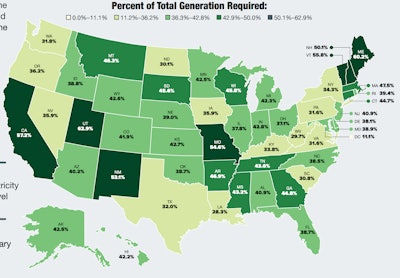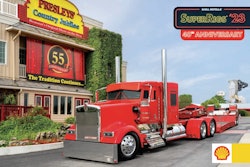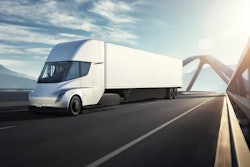
The prospect of converting the nation's trucking fleet from diesel to battery-electric power in order to meet carbon emissions reduction goals presents several major challenges, according to newly released research.
The American Transportation Research Institute today released a new report that assesses the infrastructure requirements for converting the U.S. vehicle fleet to battery electric.
ATRI found:
- Domestic long-haul trucking would use more than 10% of the electricity generated in the country today, while an all-electric U.S. vehicle fleet would use more than 40 percent
- Tens of millions of tons of cobalt, graphite, lithium, and nickel will be needed to replace the existing U.S. vehicle fleet with battery electric vehicles, placing high demand on raw materials
- Current technology will necessitate more chargers than there are truck parking spaces in the U.S., with hardware and installation costs of $112,000 per unit, or more than $35 billion system-wide
“Carbon-emissions reduction is clearly a top priority of the U.S. trucking industry, and feasible alternatives to internal combustion engines must be identified,” said Srikanth Padmanabhan, president of Engine Business, Cummins Inc. “ATRI’s research demonstrates that vehicle electrification in the U.S. will be a daunting task that goes well beyond the trucking industry – utilities, truck parking facilities, and the vehicle production supply chain are critical to addressing the challenges identified in this research. Thus, the market will require a variety of decarbonization solutions and other powertrain technologies alongside battery electric.”
RELATED NEWS: Musk tweets Tesla's Class 8 Semi makes 500-mile, 81,000-pound trip
The Biden Administration has made reducing carbon emissions a top priority in its battle against climate change. It has called for half of all new vehicles to be battery-powered by the end of this decade.
The ATRI study found that full electrification of the U.S. commercial vehicle fleet would require a large percentage of the country’s present electricity generation. Some individual states would need to generate as much as 60 percent more electricity than is presently produced, according to the ATRI study.
ATRI concludes, "Large-scale infrastructure investment is a necessary precursor to electrification."
Production of battery electric vehicles also has considerable environmental and social impacts. Mining and processing produce considerable CO2 and pollution issues, and the exploitation of laborers who work in mining operations is common in some source countries, according to ATRI's report.
ATRI’s analysis also found a major increase in demand for the raw materials mined for battery production. Tens of millions of tons of cobalt, graphite, lithium, and nickel will be needed to replace the existing U.S. vehicle fleet, placing high demand on raw materials, ATRI found. Depending on the material, electrification of the U.S. vehicle fleet would require 6.3 to 34.9 years of current global production. This is the equivalent of 8.4 to 64.4% of global reserves for just the U.S. vehicle fleet.
ATRI concludes, "Existing raw material mining for BEV batteries will likely need to be re-sourced with an emphasis on domestic mining and production."
Finally, it was found that charging the nation’s long-haul truck fleet will prove challenging, partially due to the ongoing truck parking crisis. Current technology will necessitate more chargers than there are truck parking spaces in the U.S., with hardware and installation costs of $112,000 per unit, or more than $35 billion system-wide.
RELATED NEWS: Would you drive an all-electric truck?
The new report calls truck charging availability the Truck Parking Crisis 2.0. That's because, according to ATRI, regardless of advances in battery capacity or charge rates, BEV charging will be limited by HOS and parking availability. Other barriers include laws preventing commercial charging at public rest areas and the remoteness of many truck parking locations. To understand the truck parking challenges, ATRI said it quantified the truck charging needs at a single rural rest area, which would require enough daily electricity to power more than 5,000 U.S. households.
ARTI concludes, "A completely new charging infrastructure is critical to increasing BEV truck adoption by the trucking industry."
The new research adds major advances in battery technology are key to solving what it calls "BEV Truck Conundrum: battery weight increases price and range, and decreases available cargo weight."
A copy of the full report is available through ATRI's website here













